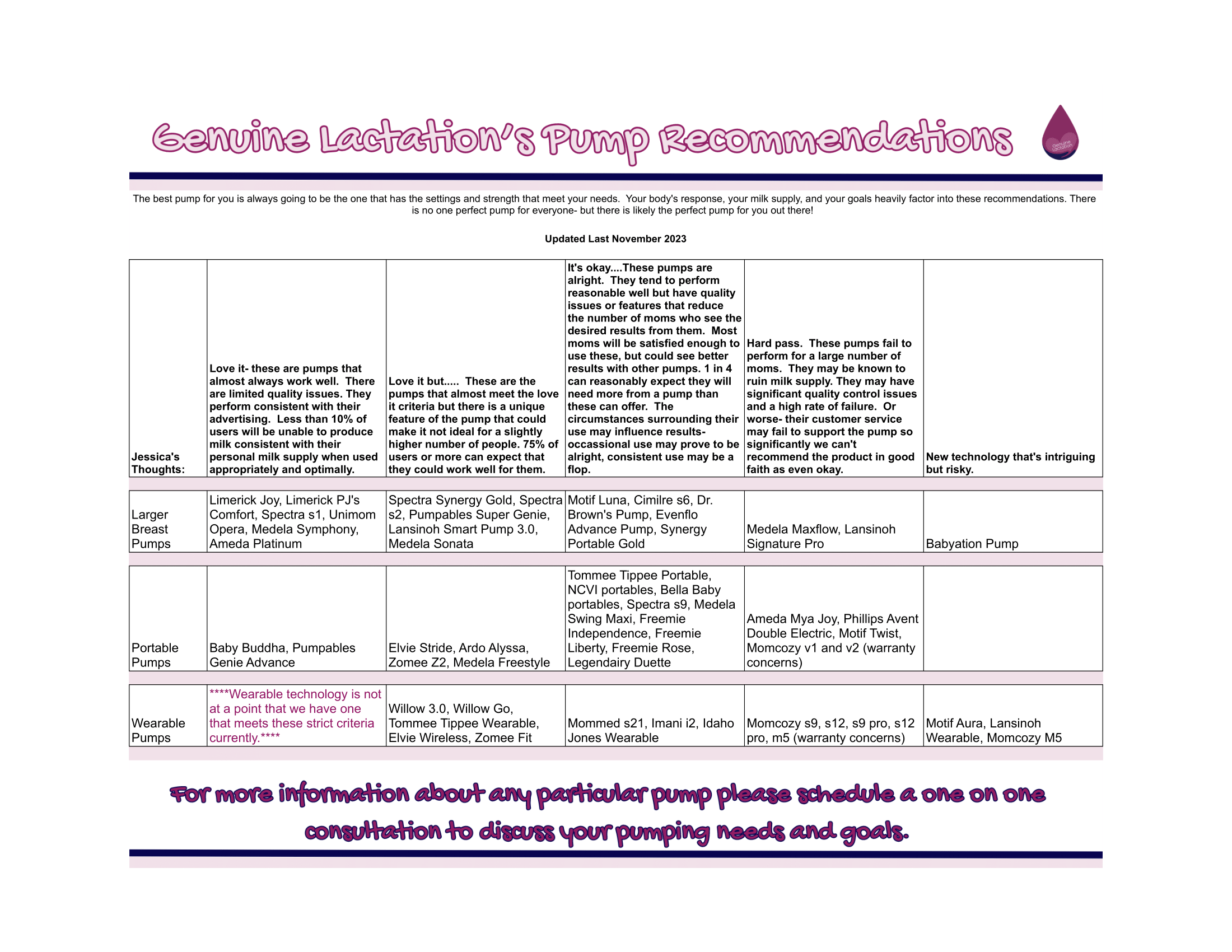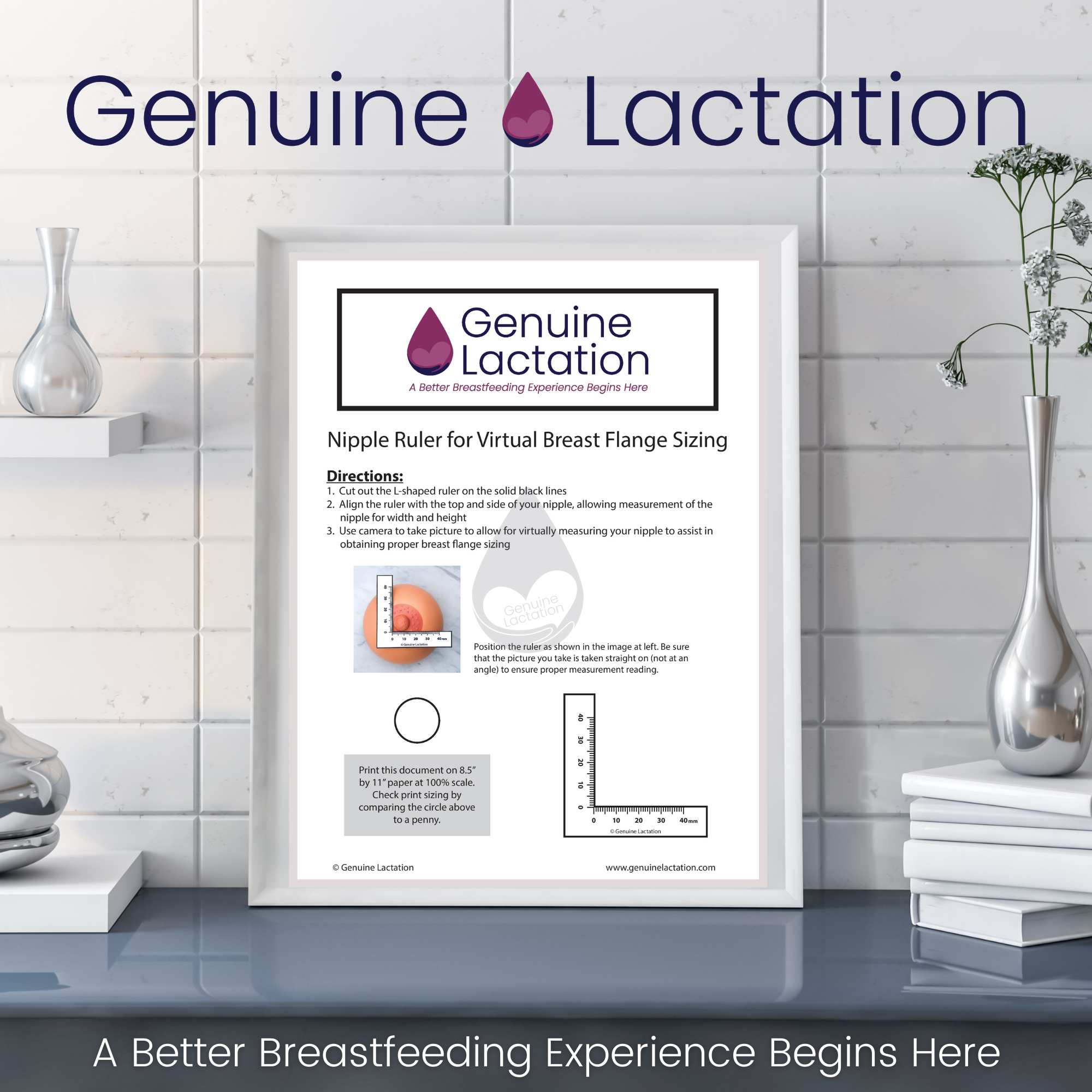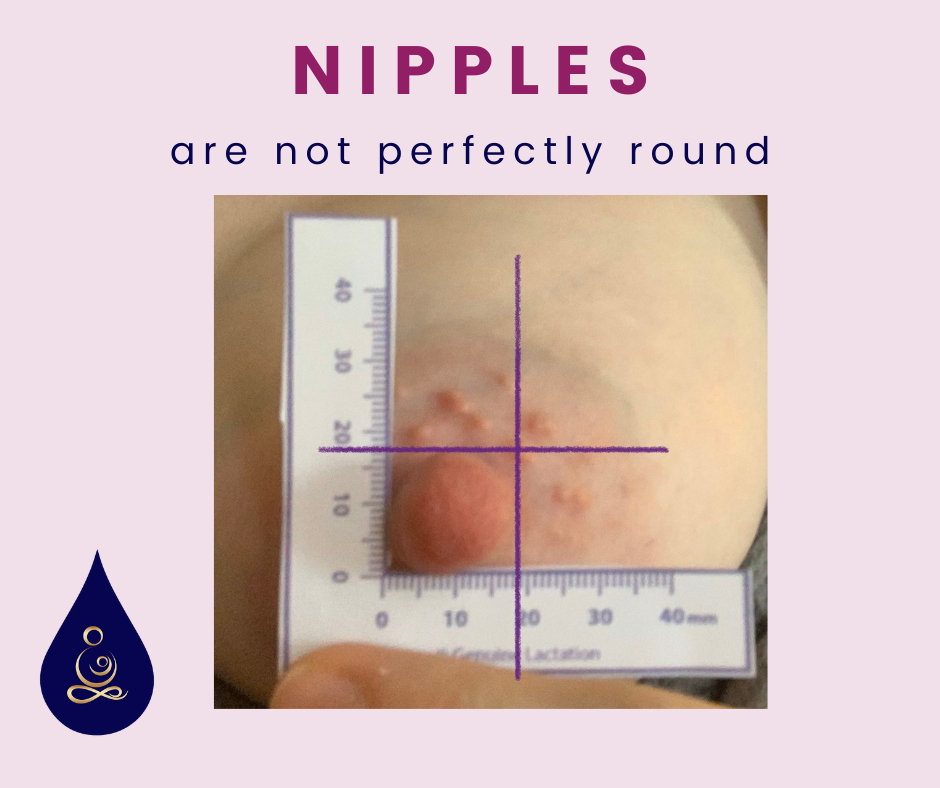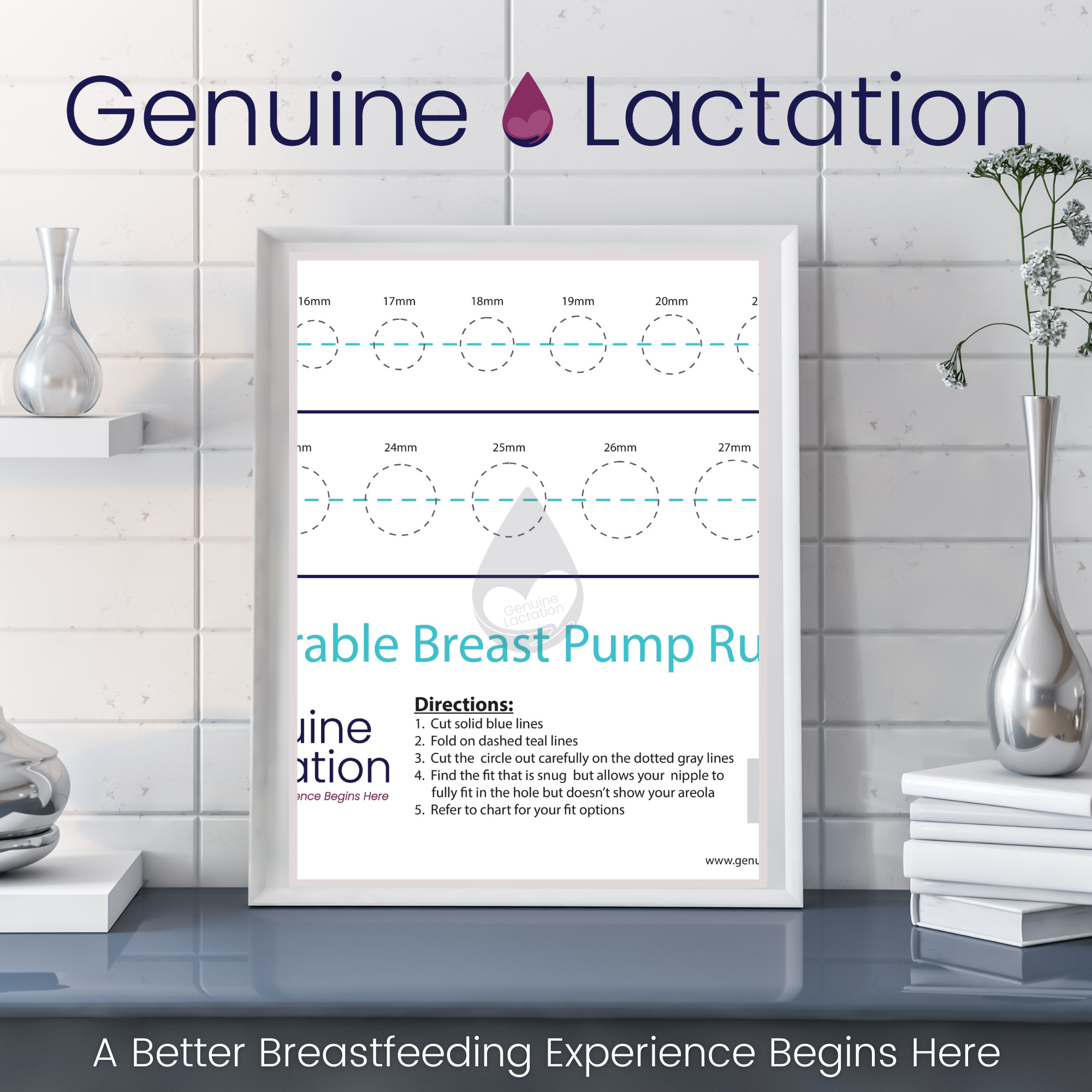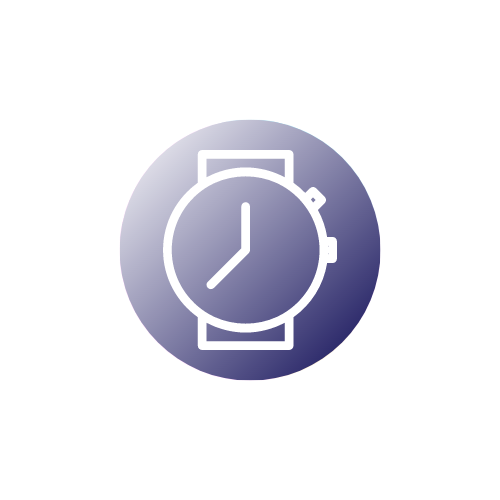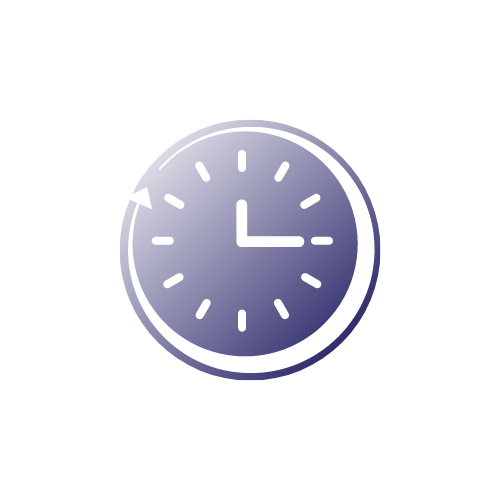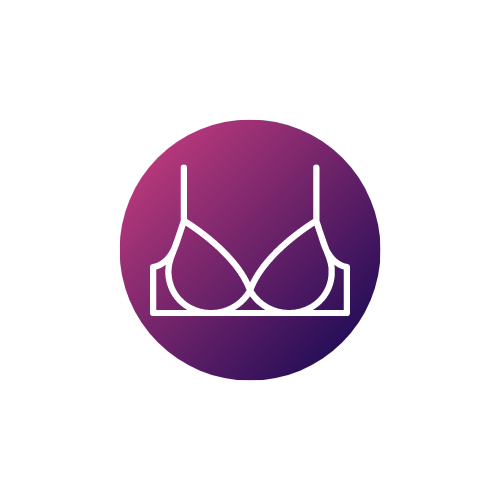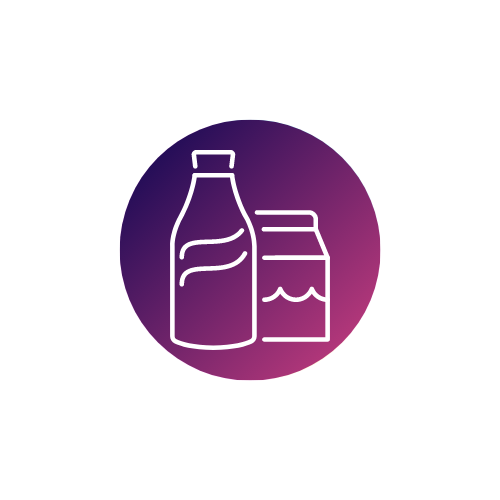
All Things Breast Pumps
85% of American Mothers will use a breast pump during their breastfeeding journey.
Most will use the wrong size flanges and will receive outdated and unhelpful support.
That. Stops. Here.
The key to a successful breast pump experience is using the right type of pump and the right size and style of breast flange to meet your goal.
What is your reason for using a breast pump?
Are you routinely expressing your milk with your breast pump to sustain your supply?
Is the pump just an occasional thing when you are separated from your baby for short periods of time?
Are you trying to create a small freezer stash of milk to allow you to be separated for short periods of time?
Beware of deceptive marketing practices. Not everything that glitters after the marketing team has done their work is gold. Many pumps advertise themselves as “hospital grade” pumps, or make claims about the milk supplies of their users, implying they must be fabulous. Some use influencers to sell their pumps with content that is more fantasy than reality.
Here is the reality….
Some breast pumps are incredible. Others are so-so. Some just suck in all the wrong ways. You need to be talking to a breast pump expert who understands these pumps and what it takes to help pumping parents meet their goals.
Different Types of Breast Pumps
Manual Pumps
Manual Pumps are typically used to pump one breast at a time, and are powered by manually moving a lever or squeezing a bulb to create the suction to trigger milk removal.
A popular manual pump is the Haakaa Flexible Silicone Pump, which can function as a passive milk collector, but can also help stimulate milk production via negative pressure.
Use these Pumps When:
Nursing on one side to store a small stash of milk, or to cope with oversupply.
Pumping is needed occasionally.
Battery or power is unavailable for any reason
Single User Pumps
Traditional Single user pumps are intended for use by one mother, and depending on how they are powered may be suitable for occasional or exclusive pumping. These pumps vary in strength depending on their motors and power source.
Traditional single user pumps may be open system pumps or closed system pumps.
Open system pumps have no barrier between the breast milk and the motor, and bacterial contamination of the milk if used by multiple mothers is theoretically possible.
Closed system pumps incorporate a hygienic barrier between the motor and the milk collection. These pumps are still recommended by the FDA as single user pumps, but some mothers feel confident using these pumps second hand.
Use these Pumps When:
Pumping is needed from occasional use to exclusive use, depending on the quality and strength of the pump.
Wearable Pumps
Wearable Breast Pumps are newer in the world of breast pumps, and range from simple plastic milk collector flanges that can worn inside the bra but requite a traditional pump to create the suction, to a fully contained and independent breast pump worn inside the bra.
Wearable Breast Pumps provide unprecedented ability to discretely pump while being more mobile than traditional pumps allow for.
Use these Pumps When:
Discretion or mobility is of high priority for making pumping work for you.
Heavy Duty Multi-User Pumps
Heavy Duty Multi-User Pumps are what come to mind when people say the term “Hospital Grade Pump.” These pumps are strong enough to establish a milk supply when a mother can not nurse to establish supply, and to maintain supply during an extended separation. These tend to be more expensive than other pump options with costs ranging from several hundred dollars to several thousand.
Many of these pumps are available as rentals. Some of the rental costs may be covered by health insurance when medically required.
Some mothers that exclusively express their milk with a breast pump choose to purchase a multi-user pump like the Medela Symphony or the PJ’s Comfort Pump by Limerick second hand on sites like Ebay or Mercari.
As long as new pump kits (flanges, filters, tubing, etc) are purchased by each mother, this practice is considered completely safe.
Use these Pumps When:
Establishing your milk supply.
You have exclusive pumping needs.
Pump recommendations are based off the individual pumping parents needs, goals, budget, and desired features! Your best bet at picking an optimal breast pump is to talk with me one on one. If you want a general overview based on my experiences supporting thousands of pumping parents in my private practice here you go!
How Should a Breast Pump Flange Fit?
Despite the fact that most breast pumps come with 1 or 2 sizes of breast flanges (typically a 24 mm and a 27/28 mm) sizes for available breast flanges range from 13 mm to 40 mm, and many women require a different size from the standard 24/27/28 to be able to pump comfortably while fully emptying their breasts. Getting the proper breast flange fit can make a world of difference in your pumping experience.
The proper breast flange fit is one that:
Allows the nipple to fit easily into the flange tunnel
Does not pull more than 2-3 mm of areola into the tunnel
Is comfortable when pumping
Empties your breasts fully
Does not cause pain or nipple damage
Take a look at these visuals to help you understand what a breast pump flange should look like when properly fitted based on the type of pump you are using.
Here is what a properly sized flange looks like when using a traditional style of breast pump, or the wearable Elvie Pump, Freemie cups, or Spectra Cups. The nipple fits easily into the tunnel, with 2-4 mm of space around the nipple PRIOR to beginning to pump.
This front view shows you how the flanges that are too large would cause your areola to be pulled into the flange tunnel. This will cause pain, swelling, decreased output, and possibly nipple damage.
There is currently one breast pump on the market that requires different flange sizing for optimal fit. The Willow Pump offers wearable convenience with the ability to pump at any angle. This is achieved by creating a constant suction on the nipple to prevent spillage of the milk. This unique suction can cause more swelling than a traditional style of pump, and requires a more snug fit against the nipple to achieve the optimal fit than a traditional breast pump flange. It is incredibly important with this pump to measure the nipple by height and width to make sure that the flange is snugly fit to the nipple but not too small using this nipple ruler.

So how do we achieve this optimal breast flange fit?
YOU HAVE TO MEASURE YOUR NIPPLES!
Nipples are measured at their widest point, which is typically where the base of the nipple meets the areola.
Estimates are great, but nothing will replace getting an exact measurement of your nipples.
There are several ways to measure your nipples, including several free printable nipple rulers. A common issue with these methods is that they only measure the width of the nipple, which doesn’t account for the fact that nipples are not perfectly round.
Download the L-Shaped Nipple Ruler for FREE
*The L-Shaped Ruler*
Originally designed to make virtual flange fitting easier for lactation consultants, this ruler has proved to be the most accurate printable nipple ruler available for free download.
The L-shape allows for simultaneous measurement of the width and height on the nipple, and is one convenient piece allowing for one handed manipulation for measurement.
The easiest way to do this is to use your phone to take a photo of the ruler lined up against the base of your nipple.
Using the mark-up editing feature of your phones photo editor lets you make sure you are reading the ruler correctly.
The larger of the two numbers is your nipple size in mm.
With traditional breast pump flanges, we can take a peek at the nipple in the flange before pumping, and while pumping to assess sizing for proper fit.
With wearable pumps, we don't have that ability, and we need an alternate way to assess how a particular size flange/insert will fit. This Wearable Breast Pump Ruler gives us the ability to see how a certain size fits your nipple, check clearance around the nipple for proper fit, and determine fit even when we can not see the nipple in the actual flange.
Use the Wearable Breast Pump Ruler AFTER using the L-shaped ruler to determine your nipple size in mm for best results.
For the Elvie Pump, Freemie Cups, and Spectra Cups the sizing will be the same as traditional pump flanges. For the Willow Pump the optimal sizing will be a more snug fit to compensate for the constant suction.
The Genuine Lactation Rulers can be downloaded for free or mailed for a small fee here.
So what about elastic nipples?
Elastic nipples are a frequent topic in online breastfeeding support groups! Elasticity of the breast and nipple tissue is completely normal, when nursing this poses no issue, but with pumping it can make finding the right flange slightly tricky. Depending on how elastic your tissue is your nipples and areola may stretch into parts of the flanges that restrict milk flow and can be a source of pain and nipple damage. With elastic nipples the goal is to get a flange size that allows your nipples to expand properly, but does not restrict expansion so much as to cause pinching, nor allow such great expansion as to cause pain and damage.

How Often, How Long, and When Should I Pump?
Breast pumps work by removing milk from the breast, the same as a nursing session would. They also serve to provide the necessary stimulation to signal the body that continued lactation is desired. There is a lot of conflicting advice about how often to pump, how long to pump for, and when to start pumping.
Let’s break this down to help you understand how to make pumping work for you!
How Often Should I Pump?
You will need to pump often enough to either establish, or maintain your milk supply.
If you are exclusively pumping, and less than 12 weeks postpartum, and not struggling with an oversupply, you should be pumping about 8 times in 24 hours, for 20-30 minutes at a time.
After 12 weeks many people can drop pump sessions and maintain their supply, but this is dependent on each individual and their capacity for milk making.
How Long Should I Pump?
Pump sessions are typically effective at between 20-30 minutes. In order to get appropriate stimulation you want to pump long enough to empty the breasts.
Some people find they need to pump for closer to 45 minutes despite proper pump techniques and properly fitted flanges. This is okay if the pump is not causing any type of nipple pain or damage.
I do recommend booking a consultation if you are struggling to empty efficiently when pumping. You might benefit from having a pump session observed to help you optimize your success.
If you are struggling to empty, you might consider lecithin to help move your milk more easily.
When Should I Start Pumping?
The idea that you can’t pump before six weeks postpartum floats around, and there is no clear answer as to when to start pumping because it all depends on your goals.
Are you exclusively pumping? You would want to start within 1-2 hours of giving birth.
Are you going back to work at 8 weeks, maybe starting once a day at 6 weeks is adequate.
Are you just wanting to occasionally pump to go out for a bit, but otherwise you are with your baby to directly nurse? Just pump when you need to.
Again, there is no hard rule here. It is all about using pumping to meet your personal breastfeeding goals.
Pumping Bras
The type of pumping bra that will work best for you is a highly personal choice. There are a handful of options available, and they vary in style and function. Having the right pumping bra for your needs can make pumping significantly easier.
The Traditional Pumping Bra
The traditional pumping bra is a firm fitting bra worn only when you need to pump. This style of bra has holes cut into the fabric to accommodate the breast pump flanges, and is often adjustable with extendable front and back panels to address alignment with your nipples. This bra would be difficult to wear in between pumping sessions, as your nipples would likely protrude through the flange openings, and the heavy fabric lines would be very visible through clothing. This pumping bra can be frustrating for some mothers as they have to remove their clothing every time they need to pump.
The Pumping/Nursing Bra
As Breast Pumps have become an increasingly common part of the breastfeeding experience, there are a number of combination nursing/pumping bras that serve to allow for both activities without changing clothing. These bras can be extremely convenient, and appear like a regular nursing bra under clothing. The downside for some is that these bras are not a firmly supportive of the flanges as the traditional pumping bra style, and this can be problematic for some.
Milk Storage Bags and Bottles
If you express your breastmilk, you have to have a way to safely store it. Baby bottles with secure lids are common for milk that will be used within a few days of expression. For some parents storage of expressed milk in the freezer allows them to provide human milk for their baby for a longer period of time.
When it comes to freezer storage there are essentially two types of bags.
The first is the traditional zipper top disposable milk bag, which serves exclusively as a means of milk storage. These are often frozen flat and stored stacked neatly in freezer bags (referred to as bricks). There are adapters available that allow for pumping directly to these bags.
The second kind is a screw top disposable milk bag, that can be attached to the pump directly via adapters, used to store the milk, and then attached to a bottle nipple to feed directly from the storage bag.
Bra Fit Check for Wearable Pumps
Bra Fit Check Video for Wearable Pumps

FAQs
Should I take my pump to the hospital with me?
Immeadiately after giving birth your milk is colostrum, which is stickier and thicker than mature milk. Pumps are not super great at transferring colostrum, and even if you pump, you will likely need to hand express to remove the colostrum. The pump is just serving to provide stimulation. If you are planning on nursing your baby, there is probably no need to take the pump unless the hospital doesn't have pumps to use or you anticipate an issue with nursing.
Will my pump output increase over time?
It depends. If you are using a quality pump with properly sized flanges and pumping frequently enough, yes, your supply should build over time to an average of 25-30 ounces in 24 hours (which is an average full milk supply).
If you are using the wrong size flange, a poor quality pump, or not pumping frequently enough, your supply will not only not increase but will likely decrease.
Can I exclusively pump long term?
Yes, long term exclusive pumping is certainly possible. It can be a lot of work to exclusively pump, and may take some attention to creating a sustainable plan for your situation, but it certainly can be done! If you are being told it is not possible, you are not working with a breastfeeding supporter than can help you meet your goals. I strongly recommend reaching out for a consultation with Genuine Lactation, you will get the support you need here.
What happens if I miss a pump session?
Missing the occasional pump session is unlikely to cause any issues past temporary engorgement and the occasional clogged duct. Once you get back on your schedule, things should sort back out.
What is more important - evenly spaced pumps, total number of pumps, or total number of minutes pumped?
This is a complicated question, and the answer is that they are all important, but it will vary by mother which factor most influences their ability to meet their goals.
Evenly spaced pumps is probably the most flexible variable with a loose routine of every 2-4 hours more important than pumping at any exact time.
Total number of pumps is important - you need to remove milk frequently enough to prevent milk from building in your breasts long enough to start down-regulation of your supply.
Total number of minutes is important mostly when working to increase your supply. If you cannot add another pump session, try adding some time to existing pump sessions to increase stimulation that way.
How do I explain pumping to friends and family?
I wish I could tell you that all of your friends and family would be understanding of your decision or need to pump your milk. Unfortunately, this just isn't true - just like with nursing, there will be some individuals who have negative opinions and feel it is their right to share these opinions with you.
You are the parent of your child, and you have to make the decisions that are best for your situation. Sometimes that means providing human milk for your human baby via a breast pump. I assure you there will always be something related to your parenting that someone has a negative opinion of, but you can make the choice to not allow their feelings to dictate your parenting experience.
In the case of friends and family who are trying to be supportive but don't understand pumping...try gentle explantation, and offer them the opportunity to ask questions. Breast pumps have only really been common outside of the hospital since the 1990's....this is still new for many people.

